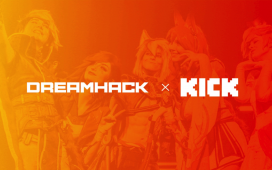Mentioned in this article
- Newzoo compared audiences for popular esports franchises in regard to viewership and gameplay.
- Roughly a quarter of League of Legends and CS:GO audiences view content but do not play.
- Comparing League of Legends, CS:GO, and Overwatch, 71% of audiences watch only one.
Not all esports fans are alike in terms of behavior and franchise crossover, according to an analysis by Newzoo shared with The Esports Observer. For example, some of the most popular franchise communities are made up of active players, while others foster a large base of viewers―potentially shaping the way that brands and publishers interact.
Newzoo analyzed League of Legends, Counter-Strike: Global Offensive (CS:GO), Overwatch, Dota 2, and Honor of Kings to compare audience behavior across 12 markets in North American and Europe. Specifically, the market analyst firm observed player vs. viewership and whether consumers strayed from their favorite franchises.
Between League of Legends, CS:GO, and Overwatch only 6% of consumers watched esports content from all three games within the previous 12 months. Overall, 71% of viewers watch only one of these franchises. League of Legends and CS:GO have the most loyal audiences, with 29% and 25% watching only that title, respectively. The two games also had the most crossover between viewers at 9% even though they are different genres.

Each esports franchise has a unique community, and this differs by market, Newzoo asserts.
For example, Overwatch and Dota 2 have the highest share of audiences who play but do not watch others play, at 54% and 50%, respectively.
League of Legends, meanwhile, attracts both players and viewers―while 26% of this audience are players only, 42% claim to play and watch, compared to 32% for Overwatch. Forty-five percent of Tencent’s Honor of Kings audience both plays and watches.
Newzoo defines active players as those who have played a title in the past three months. The crossover between players and viewers creates opportunities for cross-promotion, Newzoo stated alongside the findings.
A “significant share” of fans can only be reached through esports, Newzoo noted, such as 23% of CS:GO and 26% of League of Legends fans who view but do not play.

These findings highlight a “lean-back” audience segment that Newzoo refers to as “Popcorn Gamers” and “Backseat Viewers” who spend more time watching than playing videogames. While publishers encourage consumers to spend time in-game, not everyone can but that doesn’t mean engagement isn’t possible.
“The lean-back consumption of esports content, coupled with fans’ attachment to teams and players, helps gravitate consumers toward franchises—even after they stop playing (temporarily or permanently),” said Newzoo.
If players do not re-enter the game, the esports fanbase is so “large and engaged” that organizers can still generate revenue from esports fans though ad- and media-driven business models, Newzoo added.
Lastly, the data compared demographics between massive online battle arena (MOBA) titles in China:
League of Legends and Dota 2 on PC and Honor of Kings on mobile. The differences between these audiences can be used to inform marketing decisions, Newzoo suggests.
As a mobile-only title, Honor of Kings has the highest share of female viewers at 44%, followed by Dota 2 with 43%. The League of Legends esports audiences is most interested in cars and motorbikes, while Dota 2 fans are more likely to enjoy board or card games.















